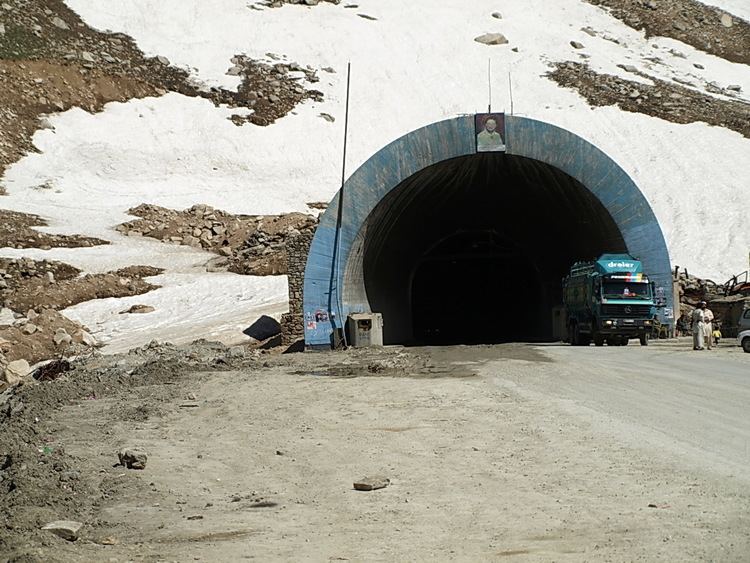Location Salang, Afghanistan | Deaths 172 | |
 | ||
Date February 8, 2010 (2010-02-08) | ||
The 2010 Salang avalanches consisted of a series of at least 36 avalanches that struck the southern approach to the Salang tunnel, north of Kabul. They were caused by a freak storm in the Hindu Kush mountains.
Contents
Leading up to the disaster
About 250 avalanches annually strike the road. During the 2008/9 season, the total loss of life in Afghanistan due to avalanche was about 40 people.
On February 7, 2010, the Afghan Red Crescent Society (ARCS) reported that 10 people were killed in Kandahar Province. Najibullah Barith, ARCS's director in Kandahar complained about the lack of local and national resources.
A spokesman of the Afghanistan National Disasters Management Authority said that 11 people were killed by avalanches in Farah, Bamyan, Ghor, and Daykundi provinces between February 4 and February 8. The Afghan flash floods and avalanches left 20 others dead in the rest of the country on February 8. The provincial authorities had summoned an emergency meeting and Loya Jurga to discuss responses on February 8. Shah Wali Kot and Shorandam districts were the worst affected.
Avalanches
A sudden blizzard struck the area shortly before the disaster, closing the tunnel and the roads around it on both sides of the tunnel. Heavy wind and rain in the area just before the incident caused up to 17 avalanches that buried at least 3.5 km (2.2 mi) of roadway in the Salang Tunnel, trapping thousands of people in their vehicles who were travelling in the tunnel. This also cut off one of the major travel links to Northern Afghanistan.
Official reports soon after the avalanche report up to 64 people were feared dead and that more could die. Afghanistan's interior minister Mohammad Hanif Atmar believed that there could be at least 2,500 people trapped in their vehicles. Many vehicles were pushed down the mountains, and hundreds of cars were buried in snow. Among the survivors many injuries were reported.
The tunnel was reopened on February 12, 2010.
Rescue
The Afghan National Army was forming the main backbone of the recovery effort with at least 500 troops sent to the area as well as 2 helicopters and several bulldozers. NATO International Security Assistance Force forces also gave their support providing four Chinook helicopters, as well as using helicopters to drop food and medical supplies to those trapped in their vehicles. The injured had been taken to Charikar Hospital in Parwan Province, and the more seriously injured had been taken to Bagram air base where they received more advanced medical treatment from coalition doctors.
Beside the direct injuries from the avalanche, there was also the danger of carbon monoxide poisoning inside the poorly ventilated tunnel, while the traffic was stalled for a long time. By February 10, about 2,500 people had been rescued, but it was feared that more people were still buried in their snow-trapped vehicles.
Criticism
Institutional authorities including the National Meteorology Authority (NMA) came under criticism for allowing the disaster to unfold. Although heavy snowfall had been forecast in the Salang area and structural walls had been weakened in previous avalanches, the pass was not closed and no preparations had been put in place. Officials point out that Afghanistan lacks the resources and infrastructure for the prevention and management of natural disasters and relies to some degree upon help by the UN and international forces.
